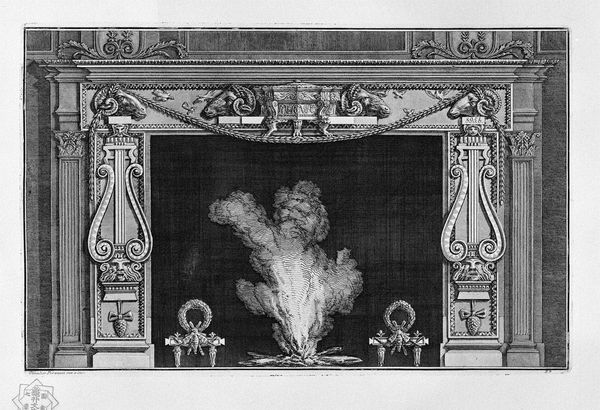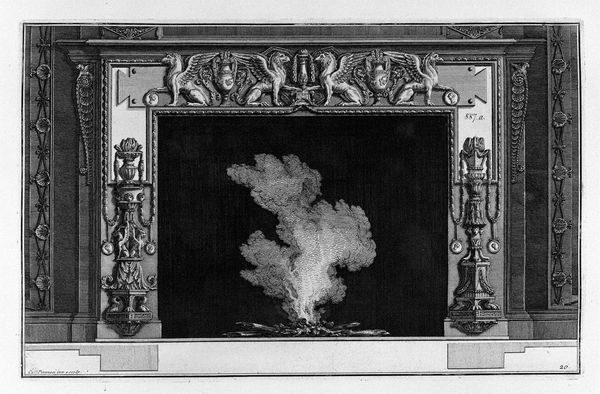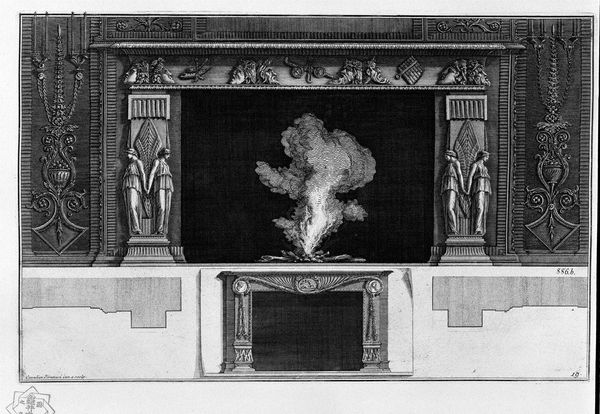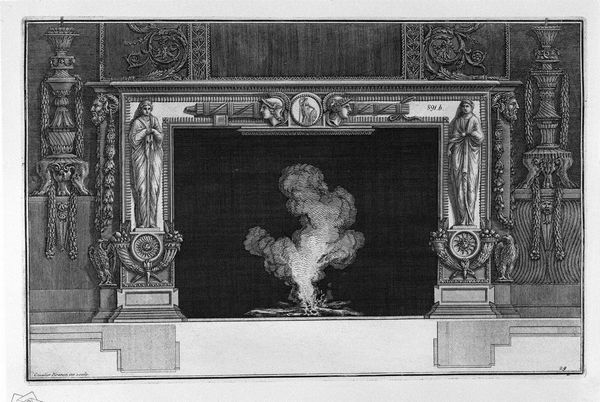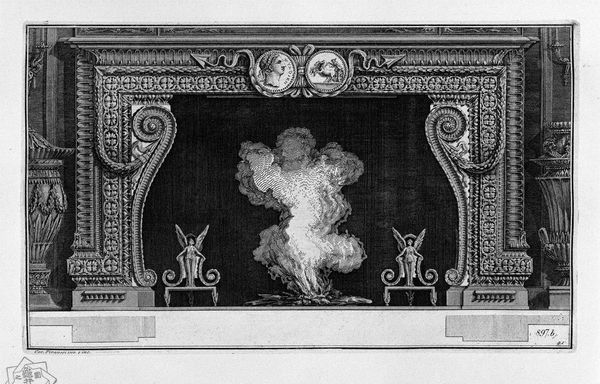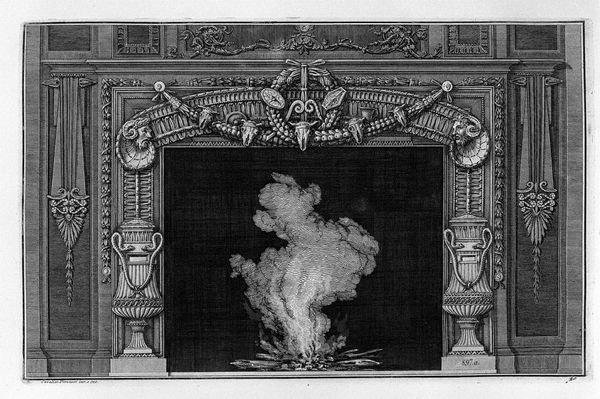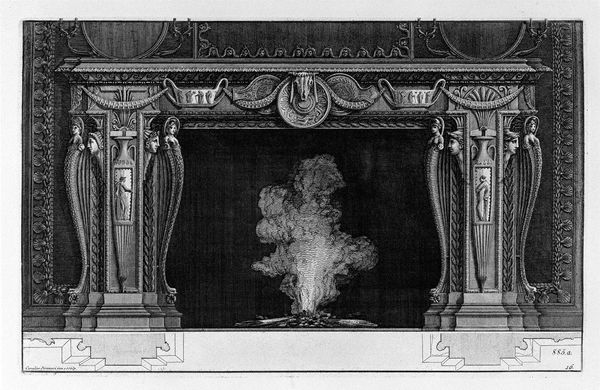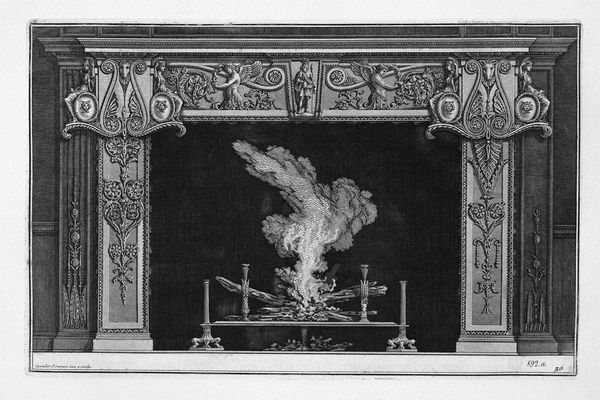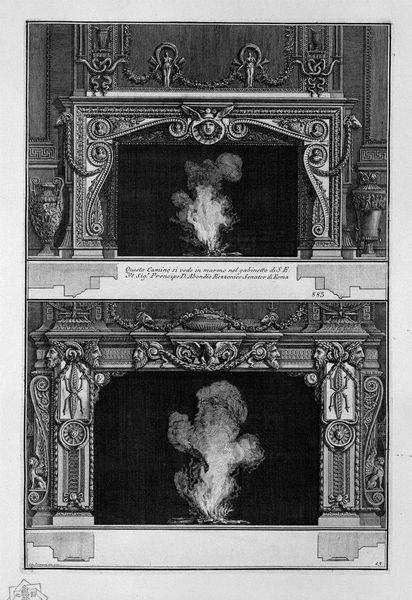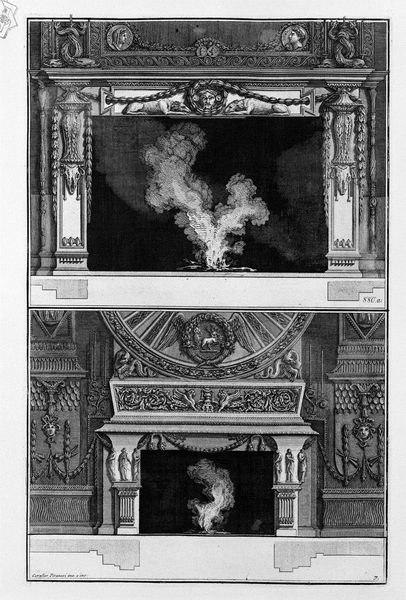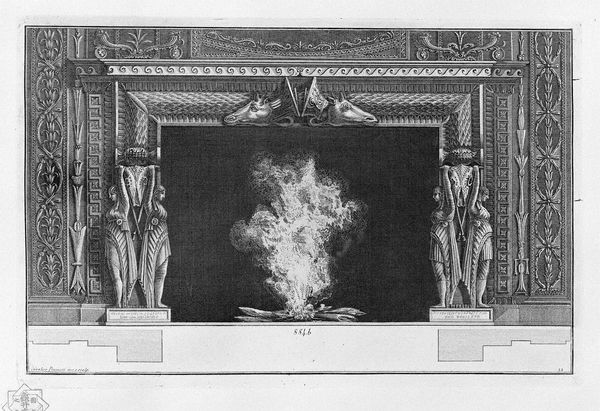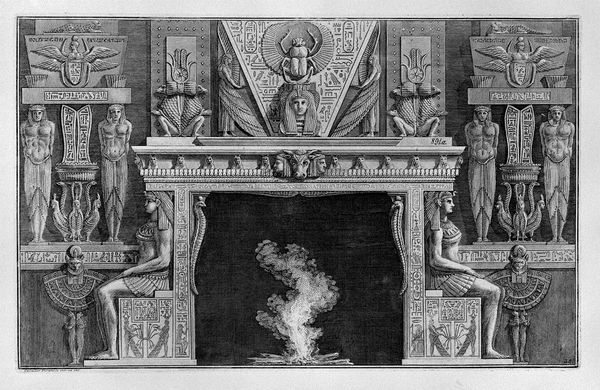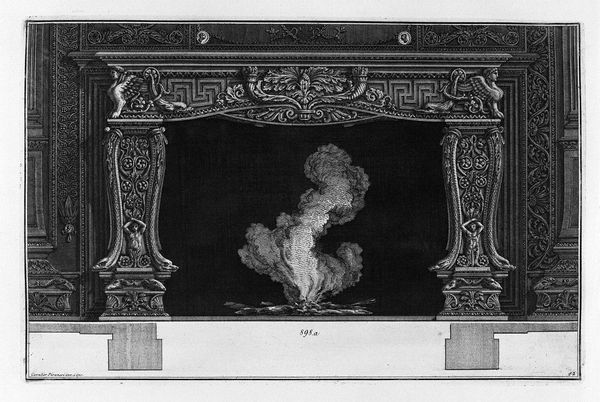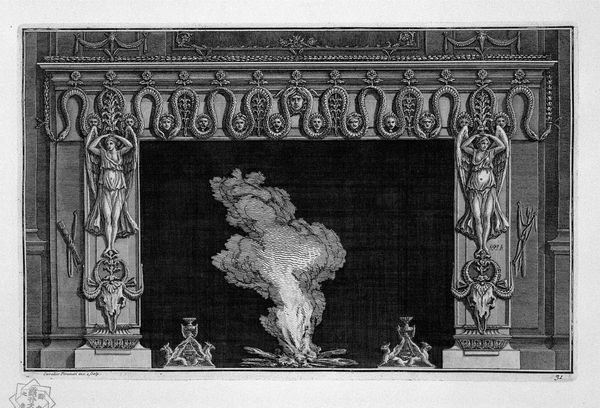
Fireplace, two greyhounds, squatting, on the sides, and the Roman she-wolf in the frieze
0:00
0:00
carving, print, engraving, architecture
#
carving
# print
#
old engraving style
#
form
#
romanesque
#
highly detailed
#
geometric
#
carved
#
line
#
history-painting
#
engraving
#
architecture
Copyright: Public domain
Curator: This striking print is titled "Fireplace, two greyhounds, squatting, on the sides, and the Roman she-wolf in the frieze," created by Giovanni Battista Piranesi. It's an engraving, demonstrating his skill in capturing architectural detail. Editor: The scene is arresting, isn't it? A potent mixture of domestic comfort and ferocious iconography. The fire seems almost menacing. Curator: Precisely. Piranesi was a master of visual rhetoric. He highlights the textures of the materials involved, from the rough stone to the meticulously carved ornamentation, reminding us of the labor embedded in these opulent displays of power. Consider how the greyhounds flank the fireplace, rendered with meticulous detail. They act as silent witnesses, underscoring themes of loyalty, status, and wealth, essential commodities in the Roman, and by extension, the contemporary societal structure. Editor: Absolutely. The fireplace, a literal hearth of the home, becomes a stage for ideological reinforcement. The greyhounds and the Roman she-wolf, a symbol of Rome's mythical origins and imperial ambition, speak volumes about the sitter's identity, perhaps aspiring to a link with historical grandeur. Look at the way Piranesi contrasts the smooth lines of the greyhounds with the textured fire— it suggests tension. It draws attention to those who have the luxury of cultivating beauty, but also insinuates a relationship to class. Who has access to such beauty, and under what exploitative practices does beauty operate in relationship to that structure? Curator: It’s essential to note that engravings like these had a practical function beyond aesthetics. Prints like this circulated as commodities within an art market; disseminating ideas, styles and promoting Piranesi’s own virtuosity as a designer and engraver, showcasing skills available for commission. Editor: That's a great point. By reproducing it as a print, Piranesi allows its dissemination and democratizes the visual representation of elite status, to an extent. But it remains tied to systems of power. The idealized image, the allusion to Roman greatness, all work to perpetuate existing hierarchies even through the seemingly mundane object of a fireplace. It really speaks to a constant tension of aspiration. It reminds me of Gramsci’s idea of hegemony and that structures of power rely on symbols to secure social consent and stability. Curator: This image definitely reveals that duality and reinforces those ideologies for contemporary viewers. It becomes so much more than interior decoration! Editor: Absolutely, looking at it that way makes me rethink the fireplace itself, as a cultural artifact! Curator: A fascinating artwork from a historical and a material perspective. Editor: One that pushes us to ask pertinent questions of visual pleasure!
Comments
No comments
Be the first to comment and join the conversation on the ultimate creative platform.
